




If you have granite countertops or surfaces in your home, you know that over time they can lose their shine and become dull. However, with a little time and effort, you can easily bring back the beauty and luster of your granite. In this step-by-step guide, we will show you how to make your granite shine again.
Firstly, it’s important to understand that granite is a natural stone and requires special care to maintain its shine. Regular cleaning with warm water and a pH-neutral cleaner will help prevent build-up and keep your granite looking its best. However, to achieve a high level of shine, you’ll need to go a step further.
Start by thoroughly cleaning your granite surface with warm water and a few drops of dish soap. Use a soft cloth or sponge to gently scrub away any dirt or debris. Rinse the surface well to remove any soap residue. Once clean, dry the surface with a soft towel or cloth.
Next, apply a granite polish or sealer to the surface. These products are specifically designed to enhance the shine of granite and provide a protective barrier against future stains and damage. Follow the instructions on the product label for best results. Use a clean, lint-free cloth to apply the polish or sealer in small, circular motions.
Why Do Granite Countertops Lose Their Shine?
Granite countertops are a popular choice for kitchens and bathrooms due to their durability and natural beauty. However, over time, even the strongest granite surfaces can lose their shine. There are several reasons why this may happen:
- Wear and tear: Daily use of granite countertops can cause them to become dull and lose their shine. Cooking, cleaning, and other activities can slowly wear down the protective sealant and polish on the surface, making it appear dull.
- Accumulation of residue: Everyday substances, such as oils, food residues, and cleaning products, can build up on the surface of the granite. This can create a layer of residue that obscures the natural shine of the stone.
- Hard water deposits: If you have hard water in your home, mineral deposits can form on the surface of the granite. These deposits can create a hazy or dull appearance on the countertop.
- Improper cleaning: Using harsh or abrasive cleaners on granite can damage the protective sealant and make the surface more prone to dullness. It’s important to use gentle, pH-neutral cleaners specifically designed for granite countertops.
- Exposure to acidic substances: Acidic substances, like citrus juices or vinegar, can etch the surface of granite countertops and cause them to lose their shine. It’s important to clean up any spills promptly and avoid using acidic cleaners on granite surfaces.
Knowing the reasons why granite countertops lose their shine can help you take proactive steps to maintain their beauty. Regular cleaning, proper maintenance, and the use of gentle cleaning products can go a long way in preserving the shine of your granite countertops.
Natural Wear and Tear
Over time, granite surfaces can begin to show signs of natural wear and tear. This can include scratches, dullness, and a loss of shine. Natural wear and tear is a result of regular use and exposure to dirt, oils, and other substances. While it may be inevitable, there are steps you can take to help restore the shine and beauty of your granite surfaces.
Causes of Natural Wear and Tear

There are several factors that contribute to the natural wear and tear of granite surfaces:
- Regular use: As granite surfaces are used on a daily basis, they can become worn down and lose their shine.
- Exposure to dirt and oils: Dirt, oils, and other substances can build up on the surface of granite, causing it to lose its shine and become dull.
- Chemical reactions: Some cleaning products and chemicals can react with the minerals in granite, causing it to become dull or discolored.
Effects of Natural Wear and Tear
When granite surfaces experience natural wear and tear, several effects can be observed:
- Loss of shine: The luster and shine of granite can fade over time, making the surface appear dull.
- Scratches: Regular use can lead to scratches on the surface of granite, which can affect its overall appearance.
- Stains and discoloration: Dirt, oils, and chemicals can cause granite to become stained or discolored, making it look less attractive.
Prevention and Maintenance
While natural wear and tear of granite surfaces is unavoidable, there are steps you can take to prevent further damage and maintain their shine:
- Regular cleaning: Clean granite surfaces regularly using a gentle, pH-neutral cleaner specifically designed for stone.
- Wipe up spills immediately: Promptly clean up any spills to prevent them from seeping into the pores of the granite and causing stains.
- Use cutting boards and coasters: Avoid placing hot pans or sharp objects directly on granite surfaces to prevent scratches and heat damage.
- Seal the granite: Apply a granite sealer every 6 to 12 months to protect the surface and prevent stains and damage.
Restoring the Shine
If your granite surfaces have lost their shine, don’t worry. There are ways to restore the luster and bring back their natural beauty:
- Clean the surface: Start by cleaning the granite surface thoroughly to remove any dirt, oils, or residues.
- Polish with a granite polish: Apply a granite polish to the surface and buff it in circular motions with a soft cloth to restore shine.
- Apply a granite sealer: Finish the restoration process by applying a granite sealer to protect the surface and maintain the shine.
By following these steps and taking proper care of your granite surfaces, you can help them shine like new again and maintain their beauty for years to come.
Daily Use and Cleaning Products
When it comes to maintaining the shine of your granite countertops, it is important to use the right daily use and cleaning products. Using the wrong products can dull the surface and leave permanent scratches. Here are some recommended products for daily use and cleaning:
1. Mild Dish Soap
One of the easiest and most effective ways to clean your granite countertops on a daily basis is to use a mild dish soap. Dilute a few drops of dish soap in warm water and use a soft cloth or sponge to clean the surface. Avoid using sponges with abrasive surfaces, as they can scratch the granite.
2. pH-Balanced Granite Cleaner
For more thorough cleaning, you can use a pH-balanced granite cleaner. These cleaners are specifically designed for granite surfaces and provide gentle yet effective cleaning. Follow the instructions on the cleaner’s label for best results.
3. Microfiber Cloth

When wiping down your granite countertops, it is important to use a non-abrasive cloth. Microfiber cloths are highly recommended for cleaning granite as they are soft and gentle on the surface. They also help to remove any streaks or smudges.
4. Granite Sealer
To protect your granite countertops from stains and spills, it is advisable to apply a granite sealer. A sealer creates a protective barrier that prevents liquids from seeping into the stone. Follow the manufacturer’s instructions for application and reapplication.
5. Avoid Harsh Chemicals
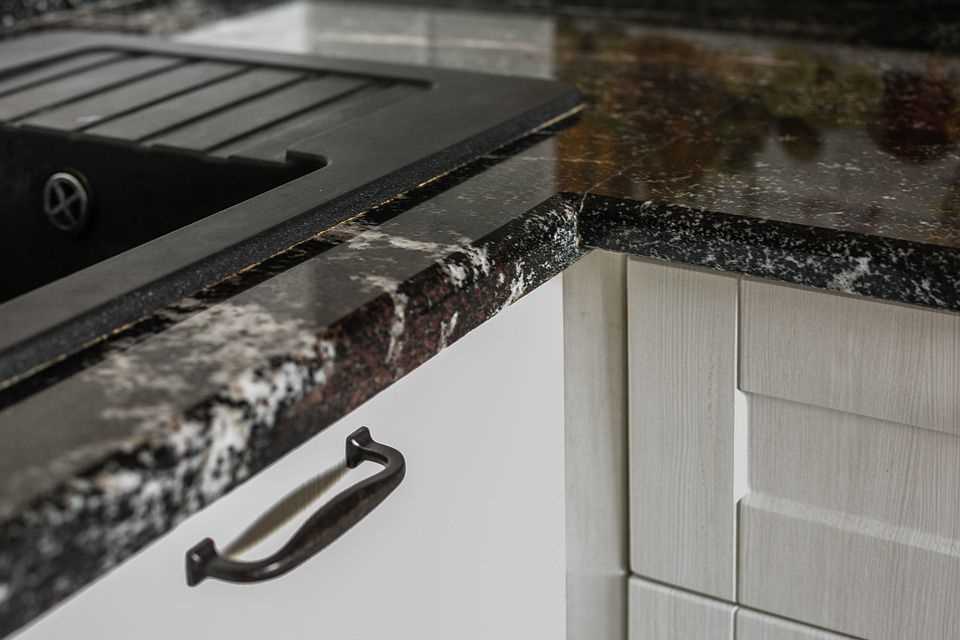
When cleaning your granite countertops, it is important to avoid harsh chemicals such as bleach, ammonia, vinegar, and citrus-based cleaners. These substances can damage the sealant and cause discoloration or etching on the surface of the granite.
6. Regular Cleaning
To maintain the shine of your granite countertops, it is recommended to clean them daily. Wipe up spills immediately to prevent staining and regularly remove any crumbs or debris. This will help keep your countertops looking clean and beautiful for years to come.
7. Avoid Scratching
Granite is a durable material, but it can still scratch if not properly cared for. Avoid using abrasive cleaning pads or scrub brushes on the surface, as they can leave scratches. Also, use cutting boards and trivets to protect the granite from sharp objects and hot cookware.
By using the right daily use and cleaning products, you can maintain the shine of your granite countertops and keep them looking their best for years to come.
Stains and Scratches
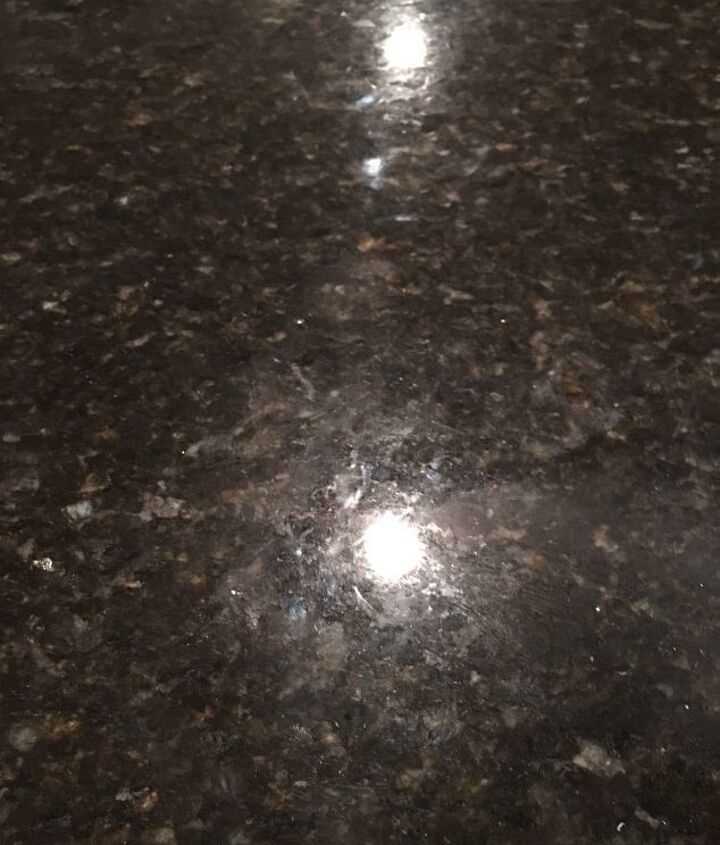
Granite countertops are known for their durability, but they can still become stained or scratched over time. Luckily, there are steps you can take to restore the shine of your granite surface:
1. Identifying the Stain Type
The first step in removing stains from granite is to identify the type of stain. Common types of stains include oil-based stains, water-based stains, and rust stains. Knowing the type of stain will help you choose the appropriate cleaning solution.
2. Removing Stains
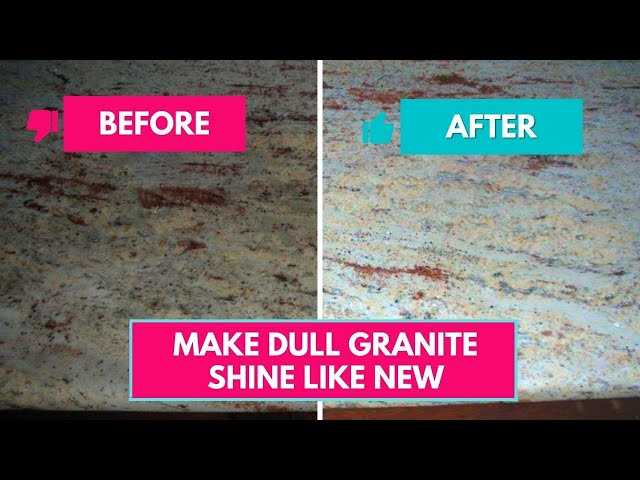
If you have an oil-based stain, you can create a poultice using a mixture of baking soda and acetone. Apply the poultice to the stained area, cover it with plastic wrap, and let it sit overnight. The poultice will draw out the stain from the granite. For water-based stains, you can use hydrogen peroxide mixed with a few drops of ammonia. Apply the mixture to the stain and let it sit for a few minutes before wiping it away. Rust stains can be removed using a mixture of vinegar and water.
3. Dealing with Scratches
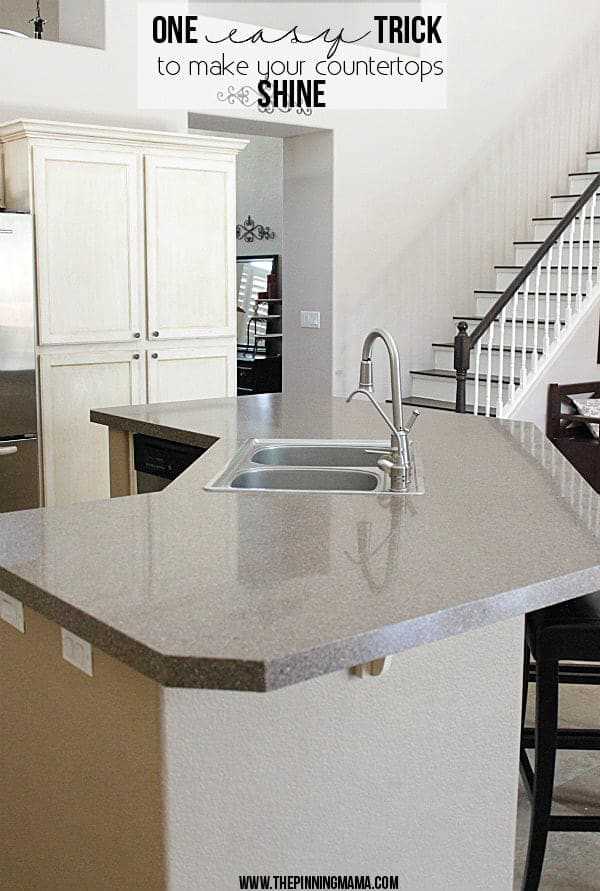
To remove scratches from granite, start by cleaning the scratched area with warm soapy water and a soft cloth. If the scratches are shallow, you can try using a granite polishing powder. Apply the powder to the scratched area and rub it in using a soft cloth. For deeper scratches, it may be necessary to hire a professional to repair the granite.
4. Preventing Future Damage
To prevent future stains and scratches, it’s important to take some preventative measures. Always use coasters or placemats under glasses, bottles, and cans to prevent any liquids from seeping into the granite. Avoid placing hot pots or pans directly on the surface and use cutting boards when preparing food. Regularly clean your granite countertops using a mild detergent and avoid using harsh or abrasive cleaners.
By following these steps, you can restore the shine of your granite countertops and keep them looking beautiful for years to come.
Improper Maintenance

Proper maintenance is key to keeping your granite countertops looking their best. Unfortunately, many people unknowingly or mistakenly use cleaning products or methods that can damage the surface of the granite. Here are some common mistakes to avoid:
- Using acidic or abrasive cleaners: Acidic cleaners, such as vinegar or lemon juice, can break down the sealant on your granite and cause etching or staining. Similarly, abrasive cleaners or scrubbing pads can scratch the surface.
- Leaving spills to sit: Granite is a porous material, and if spills are left to sit for extended periods of time, they can seep into the stone and cause staining. It’s important to clean up spills as soon as they occur.
- Using improper cleaning tools: Harsh cleaning tools, such as steel wool or scrub brushes with stiff bristles, can scratch the surface of the granite. Instead, use soft microfiber cloths or non-abrasive sponges.
- Skipping regular sealing: Granite countertops should be sealed regularly to maintain their shine and protect against staining. Skipping the sealing process can leave your granite vulnerable to damage.
- Using incorrect cleaning techniques: Certain cleaning techniques, such as scrubbing the surface vigorously or using circular motions, can wear down the protective layer on your granite. Instead, use gentle, back-and-forth motions when cleaning.
By avoiding these common mistakes and following a proper maintenance routine, you can ensure that your granite countertops stay looking their best for years to come.
Step-by-Step Guide to Bring Back the Shine
1. Gather the necessary supplies
Before you can start the process of restoring the shine to your granite, you will need to gather a few supplies:
- Warm water
- Mild dish soap
- Microfiber cloths
- Granite cleaner or stone-safe cleaner
- Granite sealer
2. Clean the surface
The first step in bringing back the shine to your granite is to thoroughly clean the surface. Start by wiping away any loose dirt or debris using a microfiber cloth.
Next, mix warm water with a few drops of mild dish soap and dampen a clean microfiber cloth with the solution. Gently scrub the granite surface in a circular motion, paying extra attention to any areas that are stained or dull.
Rinse the cloth with clean water and wipe away any soap residue from the granite. Dry the surface thoroughly with a clean, dry microfiber cloth.
3. Apply a granite cleaner
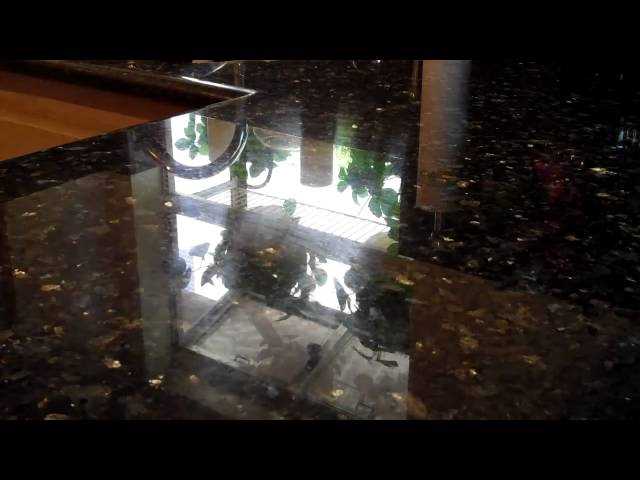
Once the surface is clean and dry, apply a small amount of granite cleaner or stone-safe cleaner to a clean microfiber cloth. Use the cloth to gently buff the granite in a circular motion.
Make sure to follow the instructions provided by the manufacturer of the cleaner, as different products may have specific application guidelines.
4. Seal the granite
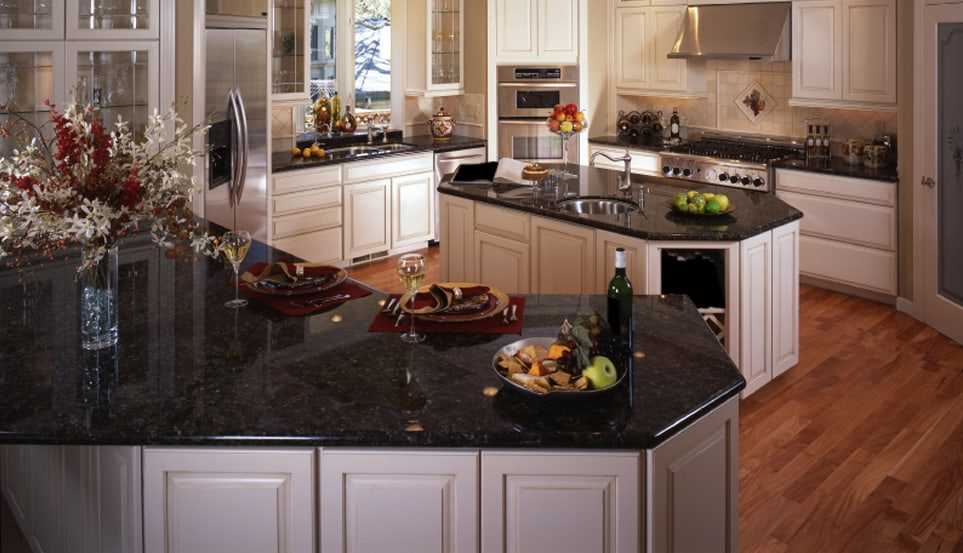
After the cleaning process, it is important to seal the granite to protect it and enhance its shine. Choose a high-quality granite sealer and follow the manufacturer’s instructions for application.
Generally, you will need to apply a small amount of sealer to a clean microfiber cloth and wipe it onto the granite surface in a thin, even layer. Allow the sealer to dry completely before touching the granite or exposing it to any liquids.
5. Maintain the shine
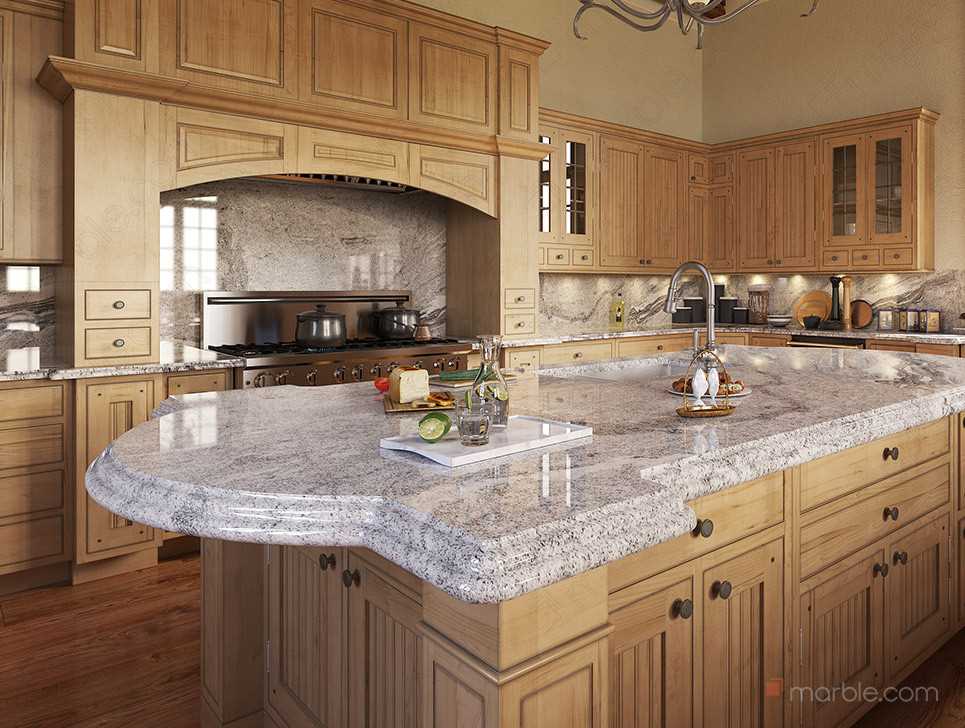
To prolong the shine of your granite, it is important to practice proper care and maintenance. Wipe up spills immediately to prevent stains, and avoid using harsh cleaners or abrasive materials that can scratch the surface.
Regularly clean the granite surface with a mild dish soap and warm water solution, and reapply a granite sealer as needed according to the manufacturer’s recommendations.
By following these steps and maintaining proper care, you can bring back the shine to your granite and keep it looking beautiful for years to come.
FAQ
Why does granite lose its shine over time?
Granite can lose its shine over time due to everyday wear and tear, as well as the use of improper cleaning products. These factors can cause the protective seal on the granite to wear off, making it susceptible to staining and dullness.
What are the signs that granite needs to be shined?
If granite appears dull, has lost its glossy finish, or if water no longer beads up on its surface, these are signs that the granite needs to be shined.
What is the best way to clean granite?
The best way to clean granite is to use a mild dish soap and warm water. Avoid using abrasive cleaners or acidic substances, as they can damage the granite. Always dry the surface thoroughly to prevent streaks or water spots.
Do I need any special equipment to make granite shine?
No, you do not need any special equipment to make granite shine. A soft cloth or mop, warm water, and a mild dish soap are sufficient for the cleaning and shining process. However, you may want to use a granite sealer to protect the surface after it has been shined.
Can I use vinegar to clean granite?
No, you should avoid using vinegar to clean granite, as vinegar is acidic and can etch the surface of the stone. It is best to stick to mild dish soap and warm water for regular cleaning.
How often should I shine my granite countertops?
The frequency of shining granite countertops depends on their usage and exposure to wear and tear. In general, it is recommended to shine granite every few months or whenever it starts to appear dull. Regular cleaning and proper maintenance can help prolong the shine of granite surfaces.















